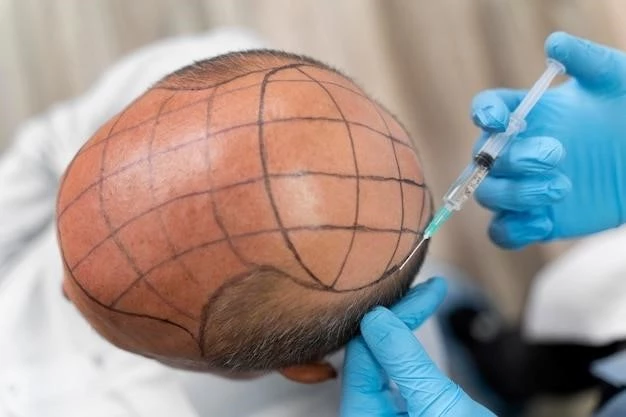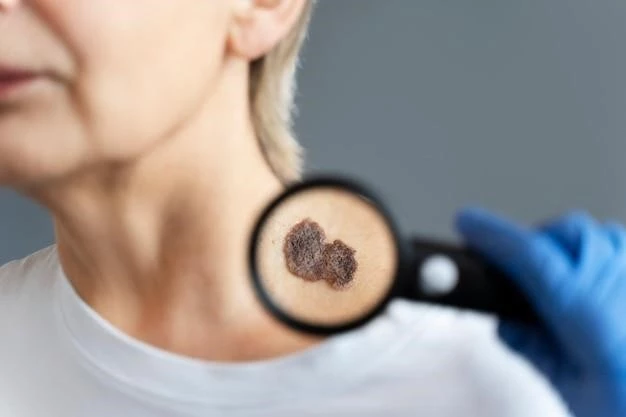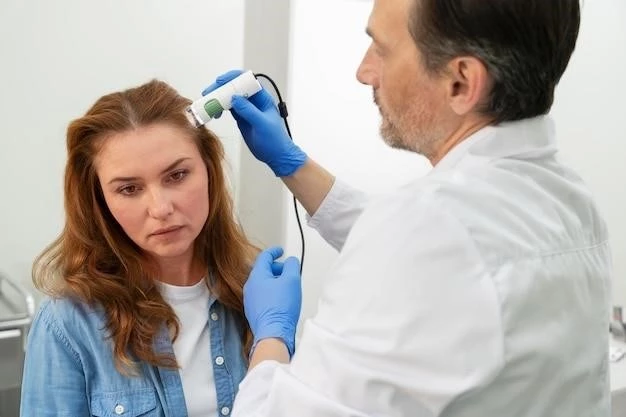Article Plan⁚ Disease ⎯ Quinquauds Decalvans Folliculitis
Introduction to Quinquauds Decalvans Folliculitis
Introduction to Quinquauds Decalvans Folliculitis
Quinquauds decalvans folliculitis is a rare neutrophilic scarring alopecia mainly affecting middle-aged adults. The condition is characterized by painful, recurrent purulent follicular exudation. First described by Quinquaud, this disease presents with scarring alopecic patches, follicular pustules, crusts, and tufted hairs. With origins dating back to 1888, the exact etiology of the disease remains unclear, leading to ongoing research efforts to better understand its pathophysiology and improve diagnostic and treatment strategies.
Stay tuned for a detailed exploration of the clinical presentation, diagnostic techniques, trichoscopic features, histopathological and microbiological findings, treatment options, epidemiology, prognosis, ongoing research, and future directions regarding Quinquauds decalvans folliculitis.
Clinical Presentation and Characteristics
Folliculitis decalvans (FD) is a chronic, neutrophilic scarring alopecia that predominantly affects middle-aged adults, leading to painful and recurrent purulent follicular exudation. The condition commonly manifests with scarring alopecic patches, follicular pustules, crusts, and tufted hairs. Clinically, patients with Quinquauds decalvans folliculitis may present with irregular white patches of scarring and hair loss, often in the vertex and occipital regions of the scalp. Additionally, induration of the scalp, follicular pustules, perifollicular crusts, and erythema are hallmark features of this rare disease.
Individuals affected by this condition may experience an expanding patch of alopecia with peripheral pustules, possibly accompanied by pruritus or pain. Although the precise etiology of Folliculitis decalvans remains unclear, investigations suggest a link between Staphylococcus aureus and an immune response deficiency in the development of this disfiguring scalp disorder. Hair follicles affected by Folliculitis decalvans may eventually die, leading to scarring, hair loss, and circular bald patches.
Diagnosis and Diagnostic Teams

Diagnostic teams for Quinquauds folliculitis decalvans⁚
- Dermatology Team⁚ Dermatologists play a crucial role in diagnosing and managing Quinquauds folliculitis decalvans. They have expertise in identifying skin conditions, conducting skin examinations, and performing biopsies.
- Primary Care Physicians⁚ Primary care physicians may initially evaluate symptoms, refer patients to specialists, and coordinate overall care.
- Dermatopathologists⁚ These experts specialize in analyzing skin tissue samples to provide accurate diagnoses based on histopathological findings.
- Microbiologists⁚ Microbiologists can assist in identifying the presence of pathogenic strains, such as Staphylococcus aureus, through microbiological studies.
- Multi-disciplinary Team⁚ A comprehensive diagnostic approach involving a team of diverse specialists can enhance the accuracy of Quinquauds folliculitis decalvans diagnosis and facilitate effective treatment planning.

Collaboration among these diagnostic team members can lead to a more comprehensive evaluation, accurate diagnosis, and tailored treatment strategies for individuals with Quinquauds folliculitis decalvans.
Trichoscopic Features and Correlation with Clinical Parameters
Trichoscopic Features of Quinquauds Decalvans Folliculitis⁚
Trichoscopy, also known as dermoscopy of the hair and scalp, can reveal distinct features in individuals with Folliculitis decalvans. Common trichoscopic findings include ″yellow dots,″ tufted hairs, and cadaverized hairs. The presence of yellow dots, which represent follicular casts or keratin plugs, along with tufted hairs, characterized by multiple hairs exiting a single follicular opening, are key diagnostic clues.
Correlation with Clinical Parameters⁚
Correlating trichoscopic findings with clinical parameters can aid in the accurate diagnosis and monitoring of Quinquauds decalvans Folliculitis. The identification of specific trichoscopic features may assist in distinguishing this condition from other forms of alopecia, guiding treatment decisions and predicting disease progression.
Understanding the trichoscopic characteristics and their correlation with clinical parameters is essential for healthcare professionals involved in the diagnosis and management of Quinquauds decalvans Folliculitis, facilitating personalized care and improved outcomes for affected individuals.
Histopathological and Microbiological Findings
Studies on Quinquauds decalvans folliculitis have highlighted histopathological characteristics consistent with a neutrophilic primary scarring alopecia. Microbiological analyses commonly reveal the presence of pathogenic strains of Staphylococcus aureus. The combination of neutrophilic inflammation and microbial colonization plays a significant role in the pathogenesis of this scalp disorder.
Patients with Folliculitis decalvans often exhibit signs of chronic inflammatory cicatricial alopecia, leading to scarring and hair loss in affected areas. Histopathological examinations typically show inflammatory changes in the hair follicles, while microbiological studies frequently identify Staphylococcus aureus as a prominent infectious agent contributing to the disease progression.
Understanding the histopathological and microbiological findings associated with Quinquauds decalvans folliculitis is crucial for accurate diagnosis, effective treatment planning, and ongoing research efforts aimed at elucidating the disease mechanisms.
Treatment Options and Efficacy
Treatment for Quinquauds decalvans folliculitis aims to manage symptoms, prevent disease progression, and improve cosmetic outcomes. Current therapeutic approaches often involve a combination of anti-inflammatory agents, antimicrobials, and immunosuppressive medications to target the underlying inflammatory and infectious components.
Common treatment options for Folliculitis decalvans may include topical or oral antibiotics, such as clindamycin or rifampicin, to address microbial colonization, reduce inflammation, and prevent further follicular damage. Systemic corticosteroids or immunomodulators may be used to modulate the immune response and reduce inflammation in severe cases.
Additionally, photodynamic therapy, laser treatments, and topical retinoids have shown promise in managing symptoms and promoting hair regrowth in some individuals with Quinquauds decalvans folliculitis. However, treatment efficacy can vary between patients, and personalized approaches based on the severity of the condition and individual response to therapy are essential.
Ongoing research aims to further explore novel treatment modalities, including targeted biologic therapies and immunomodulatory agents, to enhance the efficacy of managing Folliculitis decalvans. Collaborative efforts between dermatologists, researchers, and other healthcare providers are crucial in advancing treatment options and improving outcomes for individuals affected by this challenging condition.
Epidemiology and Risk Factors
Quinquauds decalvans folliculitis is a rare chronic inflammatory scalp disorder that predominantly affects middle-aged adults. The prevalence of this condition is relatively low compared to other types of alopecia. The disease is characterized by the development of scarring alopecic patches with follicular pustules, crusts, and tufted hairs predominantly in the vertex and occipital regions of the scalp.
Although the exact incidence and prevalence of Quinquauds decalvans folliculitis remain undefined, research suggests a slightly higher occurrence in males compared to females. Additionally, individuals of African American descent appear to have a higher predisposition to developing this disfiguring scalp disorder.
Risk factors associated with Folliculitis decalvans may include genetic predisposition, immune system dysregulation, and potential microbial colonization by Staphylococcus aureus. Furthermore, the chronic inflammatory nature of the condition can lead to scarring and irreversible hair loss if left untreated.
Enhanced awareness of the epidemiology and risk factors of Quinquauds decalvans folliculitis is essential for timely diagnosis, intervention, and personalized management approaches to mitigate the impact of this challenging alopecia subtype on affected individuals.
Prognosis and Complications
Establishing a prognosis for individuals with Quinquauds decalvans folliculitis can be challenging due to the chronic and often unpredictable nature of the disease. While the condition is considered rare and research on long-term outcomes is limited, prognosis largely depends on the individual’s response to treatment, disease severity, and adherence to therapeutic regimens.
Complications of Folliculitis decalvans may arise from persistent inflammation, microbial infections, and scarring of the scalp. Severe cases of the disease can lead to irreversible hair loss, disfiguring scarring, and significant impact on quality of life. In some instances, secondary bacterial infections and psychosocial distress may further complicate the management of this challenging scalp disorder.
As ongoing research endeavors continue to unravel the complexities of Quinquauds decalvans folliculitis, improved understanding of disease mechanisms, early intervention strategies, and personalized treatment approaches hold promise in enhancing the overall prognosis and mitigating potential complications associated with this rare form of alopecia.
Ongoing Research and Future Directions
Ongoing research on Quinquauds decalvans folliculitis aims to deepen the understanding of the pathophysiology, genetics, and therapeutic interventions for this rare neutrophilic scarring alopecia. Studies focus on elucidating the inflammatory cascades, immune responses, and microbial interactions that contribute to disease onset and progression.
Future directions in the field emphasize the development of targeted treatment modalities, including biologic agents, immunomodulators, and advanced surgical approaches, to address the underlying inflammatory and scarring processes characteristic of Folliculitis decalvans. Genetic studies also play a crucial role in identifying susceptibility genes and potential therapeutic targets for personalized management.
Additionally, ongoing clinical trials and collaborative research efforts seek to evaluate the efficacy of emerging therapies, optimize treatment regimens, and enhance patient outcomes in individuals with Quinquauds decalvans folliculitis. By integrating multidisciplinary expertise and innovative technologies, the scientific community endeavors to pave the way for improved diagnostic accuracy, prognostic indicators, and therapeutic advancements for this challenging scalp disorder.
